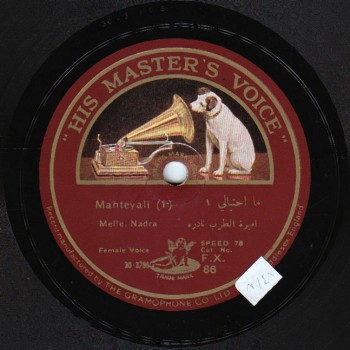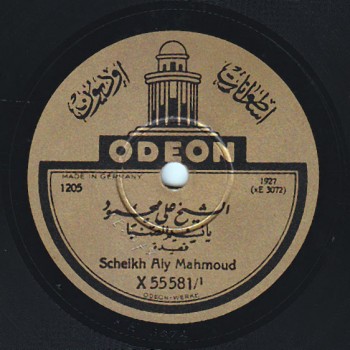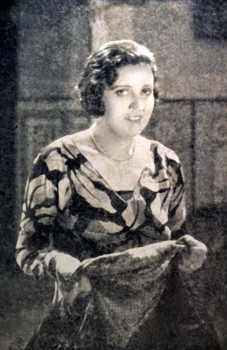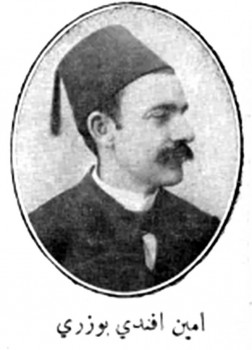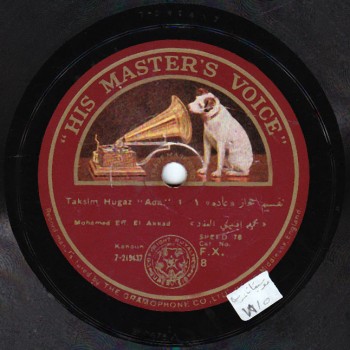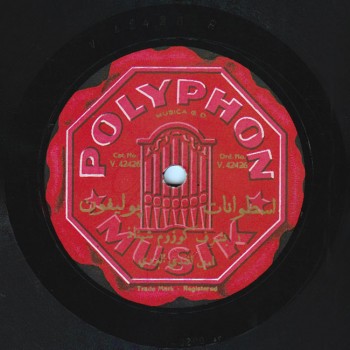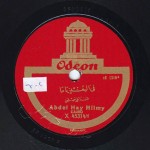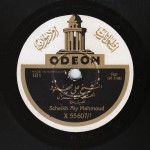The ḥijāz is the sixth maqām, derived from the bayyātī and the sīkāh: it is a bayyātī with a high third, or a sīkāh whose second and third are more than one full tone apart.
This maqām is among those positioned on the dūkāh key at the ḥijāz aspect, and at the bayyātī aspect on the ḥusaynī. Furthermore, the aspect can be changed according to the piece’s majra (course).
The jahārkāh is altered at the ḥijāz and replaced by the ḥijāz positioned between the jahārkāh and the nawā –closer to the jahārkāh than to the nawā.
The ḥijāz scale is as follows: dūkāh, sīkāh, ḥijāz, nawā, ḥusaynī, awj, kardān, and muḥayyar –as the dūkāh’s jawāb to complete the dīwān.
To Sheikhs, the second note on the ḥijāz scale is the sīkāh, not the kurdī as stated in academic books. In practice, the ḥijāz’s second is closer to the sīkāh than to the kurdī.
Mustafa Said says about the ḥijāz maqām:
The ḥijāz maqām is of a “moderate” nature: neither joyful nor “gripping”, it includes sobriety and coquetry/playfulness at once, and joy and sadness if required.
Some say that this maqām was named ḥijāz because it was born in the Ḥijāz region… a logical explanation…
While to other theoreticians, it was named ḥijāz because it is the key of the adhān. I have doubts about this explanation because the adhān is not necessarily to the ḥijāz: in the past, the adhān of each prayer was called to a specific maqām: the adhān of the Fajr (dawn) prayer was called to the ṣabāḥ, or ṣabā –that we will discuss later; The adhān of the Ẓohr (noon) prayer was called to the bayyātī, and to the muḥayyar on Fridays, …etc. The point is that the adhān was not limited to the ḥijāz key, even if this was the case in the beginning.
Indeed, to this day, the most famous adhān are called to the ḥijāz…
(♩)
Indeed, most adhān today are called to the ḥijāz…
…Please bear in mind that we are talking about those who still actually call the adhān, not those who should be arrested by the adhān police!
As mentioned earlier, the ḥijāz is sober and coquettish/playful at once: it is thus often used in religious inshād as well as in the ‘ālima’s ṭaqṭūqa, added to many dawr, muwashshaḥ, and instrumental pieces.
Ṭaqṭūqa “Al-ḥinna al-ḥinna” for example…
(♩)
…is among the oldest and most famous coquettish and playful ṭaqṭūqa composed to the ḥijāz.
The ḥijāz key is produced by the bayyātī and the sīkāh. I think it is closer to Ṣafiyy al-Dīn al-Armawī’s sīkāh pattern that is as follows: ¾-tone, tone, ¾-tone…
(♩)
This pattern is still followed in Iran, while, in Arab music, we play an incomplete fourth.
The ḥijāz’s third is one full tone higher than its second…
(♩)
And its second is shorter than the bayyātī, but it should rather be named sīkāh than kurdī…
(♩)
I have an anecdote concerning the ḥijāz:
Five or six years ago in Turkey, I heard someone playing the ḥijāz like this…
(♩) (in its original form)
He defined it as a Turkish ḥijāz, then played it like this…
(♩) (with the adjusted equal intervals)
and defined it as an Arabic ḥijāz.
I told him he was wrong, so he said: “Wrong? But many Arab instrumentalists told me that this is the Arabic ḥijāz, and that the other is the Turkish ḥijāz”. To which I answered: “This is the piano ḥijāz. It is not Arabic. Any instrument –keyboard instruments for example– with equal temperament would play the ḥijāz like this. The Arabic ḥijāz is different. All ḥijāz, including the Arabic, Turkish, and Persian ḥijāz called the humāyōn, or the ḥijāz in North Africa, are played in the same manner. The piano ḥijāz is not the Arabic ḥijāz.” I succeeded in convincing him, especially after I made him listen to ““Yā nasīm al-ṣabā”, the dialogue between Sheikh ‘Alī Maḥmūd and Sāmī al-Shawwā.
In my opinion, discussing Arab music following an occidental logic, with the conviction that this is the right way, is wrong. Generations upon generations are doing this, and those who do not are, unfortunately, considered “out of tune”. I hope one day we will be able to follow more than one way.
Our first sample to the ḥijāz key is the bashraf al-qudūm ḥijāz or bashraf kuzum ḥijāz whose composer is unknown, performed by the takht of Amīn al-Buzarī (nāy), Sāmī al-Shawwā (kamān), and ‘Abd al-Ḥamīd al-Quḍḍābī (qānūn), and recorded around 1924 by Polyphon on two sides of a 27cm record, matrix # 3199 AR and 3200 AR.
(♩)
The most famous muwashshaḥ to the ḥijāz include “Mā iḥtiyālī” composed to the 9-pulse aqṣāq rhythm. Let us listen to it performed by Sayyida Nādira Amīn, recorded in 1930 by His Master’s Voice/Gramophone, # 30-3796 and 30-3797, matrix # BG 440 and BG 441.
(♩)
Let us now listen to a qānūn taqsīm to the ḥijāz played by Muḥammad al-‘Aqqād, recorded electrically around 1927 by His Master’s Voice/Gramophone on two sides, # 7-219437 and 7-219438, matrix # BF 2675 and BF 2676. Side 1 includes a taqsīm mursal, and side 2 includes a taqsīm ‘ala al-waḥda.
(♩)
Many sub-maqām are derived from the ḥijāz, including the: humāyōn, ḥijāz dīwān, ḥijāzkār, shāhnāz, ḥijāzkār kurdī, shatt ‘urbān, nahāft, etc.
Let us now listen to dawr “Farīdu al-maḥāsini bān” to the ḥijāz dīwān sub-maqām, performed by Dāwūd Ḥusnī, recorded during the sessions of the Cairo Congress of Arab Music held in March 1932, matrix # OK 1027 and OK 1028.
(♩)
The best improvised dialogues to the ḥijāz and to many of its sub-maqām include the ibtihāl dialogue “Yā nasīm al-ṣabā taḥammal salāmī” performed by Sheikh ‘Alī Maḥmūd, in a murasala and a violin interpretation with Sāmī al-Shawwā, recorded around 1926 by Odeon, order # X 55581/1 and X 55581/2, matrix # XE 3072 and XE 3073.
(♩)
We have reached the end of today’s episode of “Niẓāmunā al-Mūsīqī”.
We will meet again in a new episode.
- 221 – Zakariyya Ahmed – 12 (1/9/2022)
- 220 – Zakariyya Ahmed – 11 (1/9/2022)
- 219 – Zakariyya Ahmed – 10 (11/25/2021)
- 218 – Zakariyya Ahmed – 9 (10/26/2021)
- 217 – Zakariyya Ahmed – 8 (9/24/2021)
- 216 – Zakariyya Ahmed – 7 (9/4/2021)
- 215 – Zakariyya Ahmed – 6 (8/28/2021)
- 214 – Zakariyya Ahmed – 5 (8/6/2021)
- 213 – Zakariyya Ahmed – 4 (6/26/2021)
- 212 – Zakariyya Ahmed – 3 (5/27/2021)
- 211 – Zakariyya Ahmed – 2 (5/1/2021)
- 210 – Zakariyya Ahmed – 1 (4/28/2021)
- 209 – W-al-Lāhi lā astaṭī‘u ṣaddak 2 (4/6/2017)
- 208 – W-al-Lāhi lā astaṭī‘u ṣaddak 1 (3/30/2017)
- 207 – Bashraf qarah baṭāq 7 (3/23/2017)

